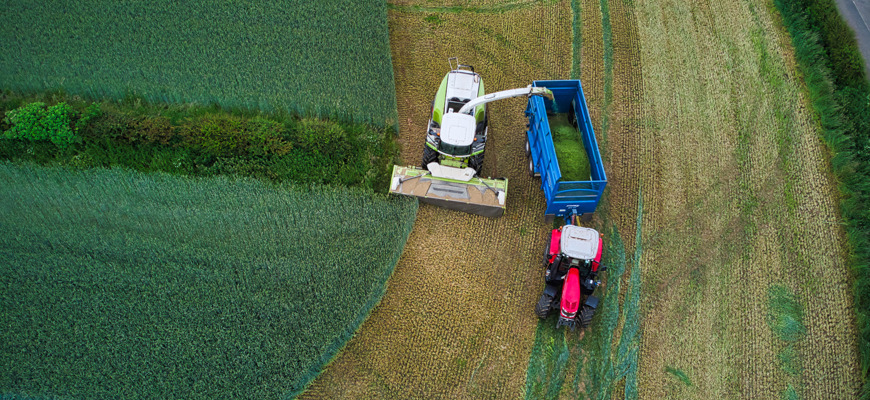Agriculture: “Route map” for agricultural reform

Agriculture is always a prime concern for the Scottish Government. Proposals for reform are contained in both the consultation Land Reform in a Net Zero Nation (covered at Journal, September 2022), which covers a broad range of issues including reform of the agricultural tenanted sector, and Delivering our vision for Scottish Agriculture. Proposals for a New Agriculture Bill, covered in my last article (Journal, December 2022). The latter consultation has closed and the bill is expected later this year.
In addition, in March 2022 the Scottish Government published its Vision for Agriculture, which outlined its long term vision to transform support for farming and food production in Scotland and create a framework which will deliver high quality food production, climate mitigation and adaptation, and nature restoration. Following from that the Government issued the Agricultural Reform Route Map, announced by Cabinet Secretary Mairi Gougeon on 10 February 2023.
Its objective is to assist rural businesses to plan and prepare for change, and give some clarity on future support mechanisms available.
What will future support look like?
From 2025, at least half of all funding for agriculture will be targeted towards outcomes for biodiversity gain and a drive towards low carbon approaches, to improve the resilience, efficiency and profitability of the sector. Support payments will comprise four tiers:
Tier 1 base payment – to support active farming, conditional on essential standards to ensure climate response, biodiversity and business efficiency outcomes and completion of a whole farm plan.
Tier 2 enhanced – to provide additional support to businesses that are effective in reducing greenhouse gas emissions, restoring and improving nature and adopting regenerative farming practices.
Tier 3 elective – to provide targeted support to facilitate nature restoration, innovation and supply chain improvement.
Tier 4 complementary – to provide complementary funding to undertake continuous professional development to develop skills and provide advice relative to new practices and innovation.
Transition
Introduction of the new support mechanisms will be phased. The existing framework will continue in 2023 and 2024. Conditionality will be introduced to the present Basic Payment Scheme from 2025.
Tier 2 enhanced support will launch in 2026, followed by tier 3 elective and tier 4 complementary support from 2027.
A timetable outlining key dates for provision of further information and guidance between 2023 and 2025 has been created and will be developed as decisions on future policy are reached. Provision of a timeline and an indicative list of activities likely to attract support in the new system is welcome. However, significant detail requires to be added to the available framework and early clarity will assist land-based businesses to plan their futures. For the moment, the Route Map provides some assistance on preparing for change and guidance on a list of measures being considered, including information on what support farmers and crofters will get. While much of this is practical and perhaps more relevant to land agents than law agents, it may be useful to have information on matters which may need to be considered when buying or selling a farm.
Preparing for sustainable farming
This is intended to assist businesses with support for conducting carbon audits and soil sampling, support for animal health and welfare activities, and access to herd data for suckler beef producers through MyHerdStats, an online tool that presents herd management information.
Carbon audits and soil sampling
This is designed to help businesses understand carbon emissions and sequestration; and potentially lower emissions and increase efficiencies. Businesses can claim a standard cost of £500 for an eligible carbon audit that will identify ways to use resources more efficiently and enable a farming business to understand its energy use and costs.
Businesses can claim actual costs of up to £600 per 100ha of region 1 land for soil sampling that will measure the nutrient content of the soil, identify nutrient deficiencies, reduce unnecessary maintenance practices and fertiliser applications, and target application for crop production.
A standard £250 development payment can also be paid with the first soil sampling claim, to allow farmers and crofters to spend time on things that will widen their understanding of nutrient management planning and associated activities such as researching best practice.
Other support
Support is available for farmers to deliver a list of animal health and welfare measures. Eligible businesses can claim standard costs up to a maximum £1,250 over two years.
The Agri-Environment Climate Scheme promotes land management practices intended to protect and enhance Scotland’s natural heritage, improve water quality, manage flood risk and mitigate and adapt to climate change.
The Forestry Grant Scheme supports the creation of new woodlands and is intended to contribute towards the Scottish Government target of 18,000ha of new woodlands per year from 2024-25.
Peatland Action supports on-the-ground peatland restoration activities and is open for applications from eligible land managers who have peatlands that would benefit from restoration. There are no geographical restrictions or target areas for funding.
The Nature Restoration Fund is a competitive fund launched in July 2021, which specifically encourages applicants with projects that restore wildlife and habitats on land and sea and address the twin crises of biodiversity loss and climate change.
The Farm Advisory Service provides practical information and advice to farmers and crofters across Scotland.
Perspectives
Features
Briefings
- Civil court: No rule against redaction
- Corporate: Privileged or confidential – who can access
- Intellectual property: Big tech, AI and enforcement
- Succession: Non face-to-face will instructions; form C1
- Agriculture: “Route map” for agricultural reform
- Parking: About this ticket…
- In-house: Caring for the carers







